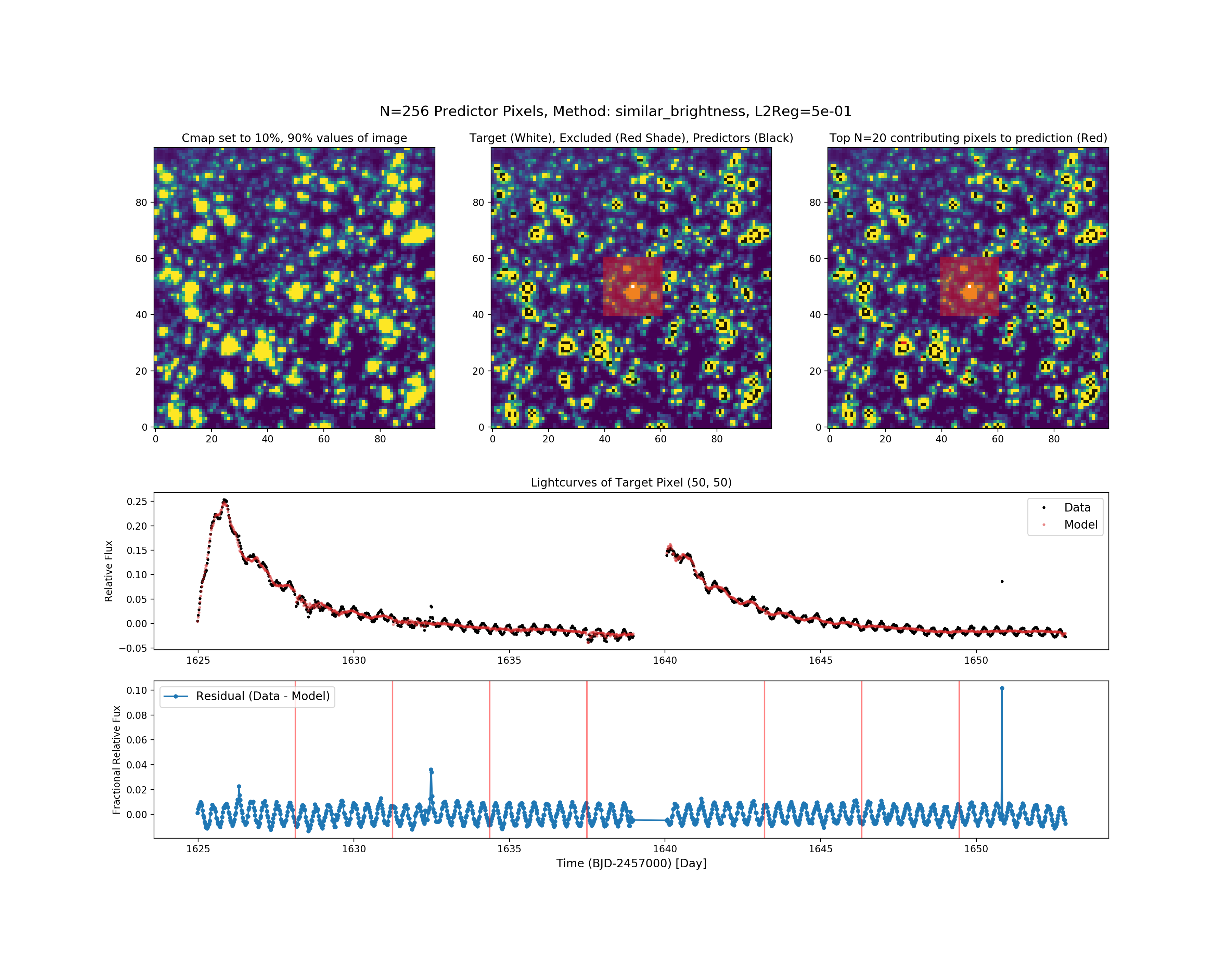
Over the summer I’ve been working with Dan Foreman-Mackey and David Hogg on developing a Python toolkit to obtain background-subtracted TESS lightcurves from the Full-Frame Images (FFI). One of the goals of this project is to detect transient events in the TESS data by doing difference imaging without constructing a reference image. We do that by implementing a method called Causal Pixel Model (CPM) Difference Imaging explained in detail here and here. CPM predicts a specific pixel’s lightcurve using a linear combination of other pixels’ lightcurves with the idea that if a specific pixel’s lightcurve variation can be explained by other pixels’ lightcurves, it’s probably a systematic background effect. In the figure attached above, we’re trying to predict the white pixel’s lightcurve in the middle of the image (top middle image) using the lightcurves from all the black pixels. The lightcurve in the middle of the figure shows the white pixel’s lightcurve (black line) and also the CPM’s prediction (red line). The blue lightcurve below that is the difference between the data and the model, showing that CPM does a pretty good job of removing the the large systematic effects (caused by scattered light from Earth). We still have a few problems to solve such as figuring out how to choose good predictor pixels (we don’t want our predictor pixels to have transits in them), but we’ve tested this model on several different sources (including supernovae) and our preliminary results are looking promising! The toolkit is still in development but we’re planning on making it available to the community soon and excited to get some feedback.